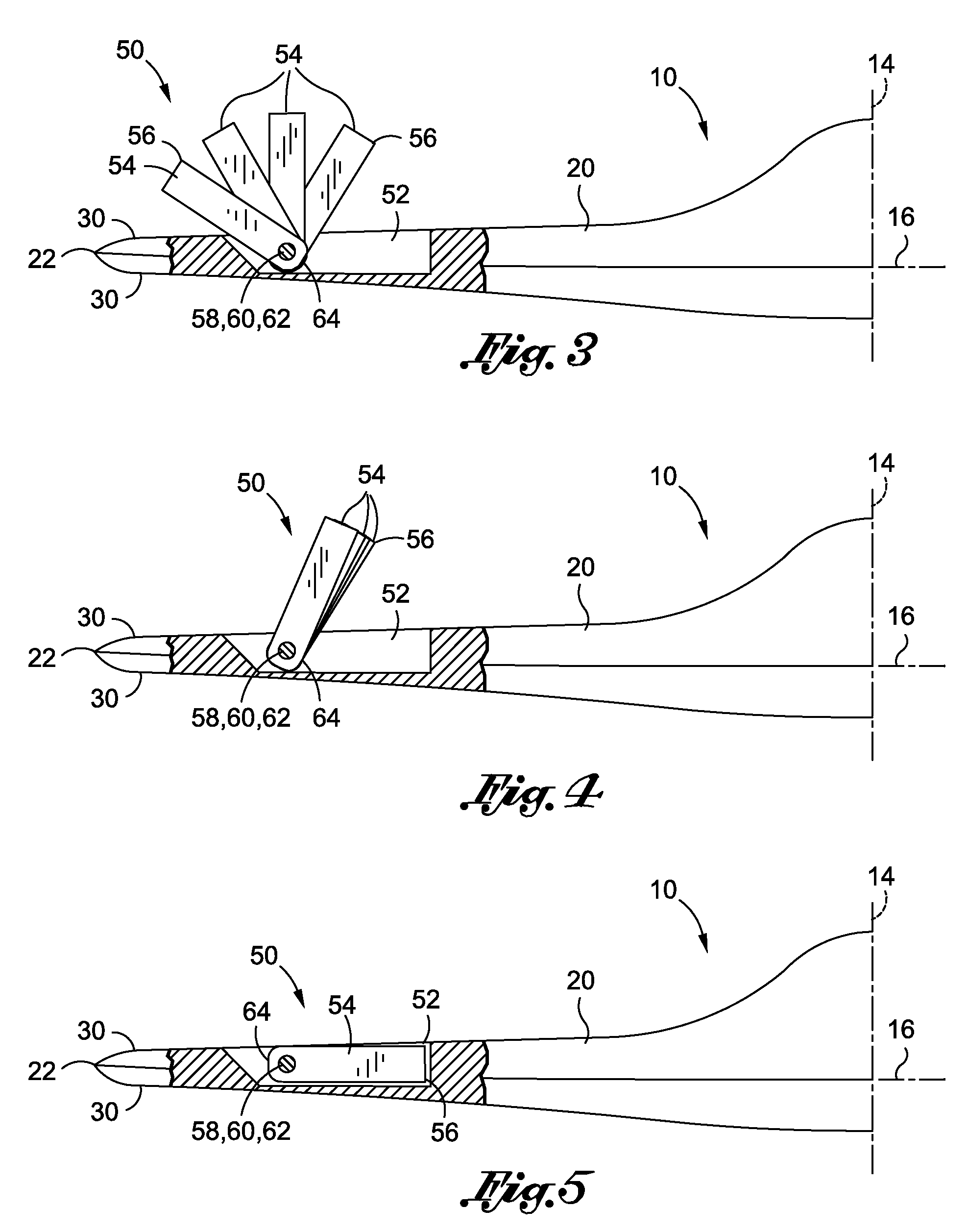Aerodynamic fan control effector
a technology of effectors and fan blades, applied in the direction of influencers using rotating members, air-flow influencers, transportation and packaging, etc., can solve the problems of affecting the overall utility of tailless aircraft, affecting the overall utility of the aircraft, and unable to control the surface arrangement of tailless aircraft, etc., to minimize or reduce the amount of net area to the oncoming main flow, facilitate packaging and storage, and maximize the net area of the blades
- Summary
- Abstract
- Description
- Claims
- Application Information
AI Technical Summary
Benefits of technology
Problems solved by technology
Method used
Image
Examples
Embodiment Construction
[0030]Referring now to the drawings 20 wherein the showings are for purposes of illustrating the various and preferred embodiments of the invention only and not for purposes of limiting the same, FIG. 1 is a perspective rear illustration of an aircraft 10 having an embodiment of a fan control effector 50 disposed on a pair of wings 20. The exemplary aircraft 10 upon which the fan control effector 50 is installed is shown as a tailless aircraft 10 having a pair of opposing wings 20. The tailless aircraft 10 may include a fuselage and / or body 18 which may be integrated with the wings 20. The aircraft 10 illustrated in FIG. 1 includes a longitudinal axis 12 extending along the forward and aft directions of the aircraft 10 with a vertical axis 14 and horizontal axis 16 being oriented orthogonally relative to the longitudinal axis 12 as shown.
[0031]The aircraft 10 is shown as having a swept-wing 20 configuration with a pair of control surfaces such as elevons (i.e., combination elevator ...
PUM
 Login to View More
Login to View More Abstract
Description
Claims
Application Information
 Login to View More
Login to View More - R&D
- Intellectual Property
- Life Sciences
- Materials
- Tech Scout
- Unparalleled Data Quality
- Higher Quality Content
- 60% Fewer Hallucinations
Browse by: Latest US Patents, China's latest patents, Technical Efficacy Thesaurus, Application Domain, Technology Topic, Popular Technical Reports.
© 2025 PatSnap. All rights reserved.Legal|Privacy policy|Modern Slavery Act Transparency Statement|Sitemap|About US| Contact US: help@patsnap.com



